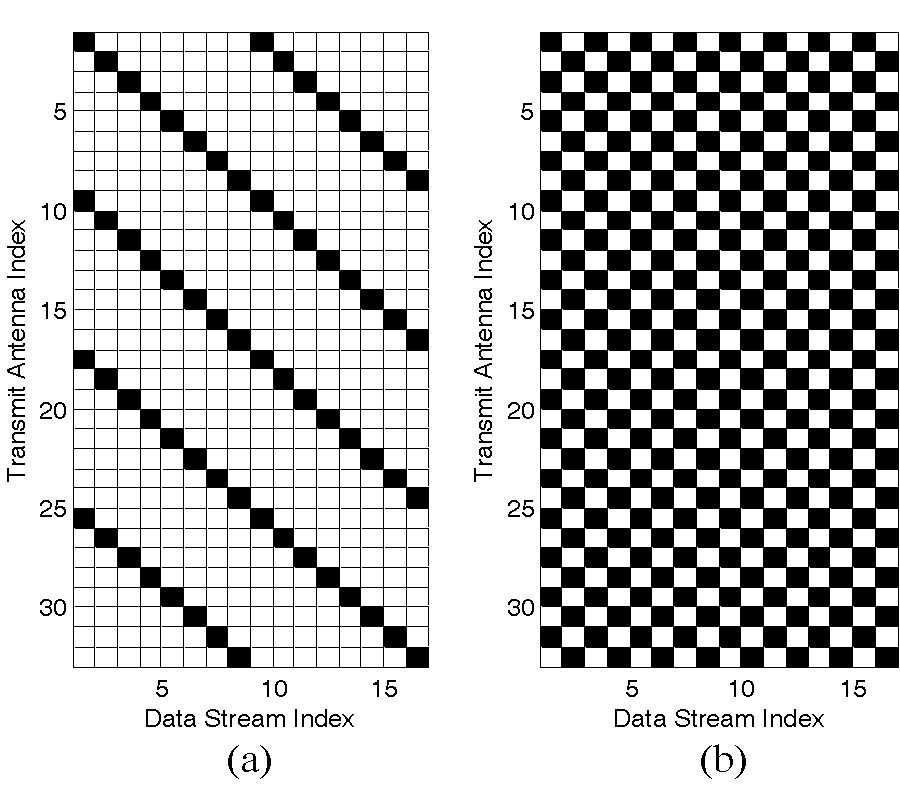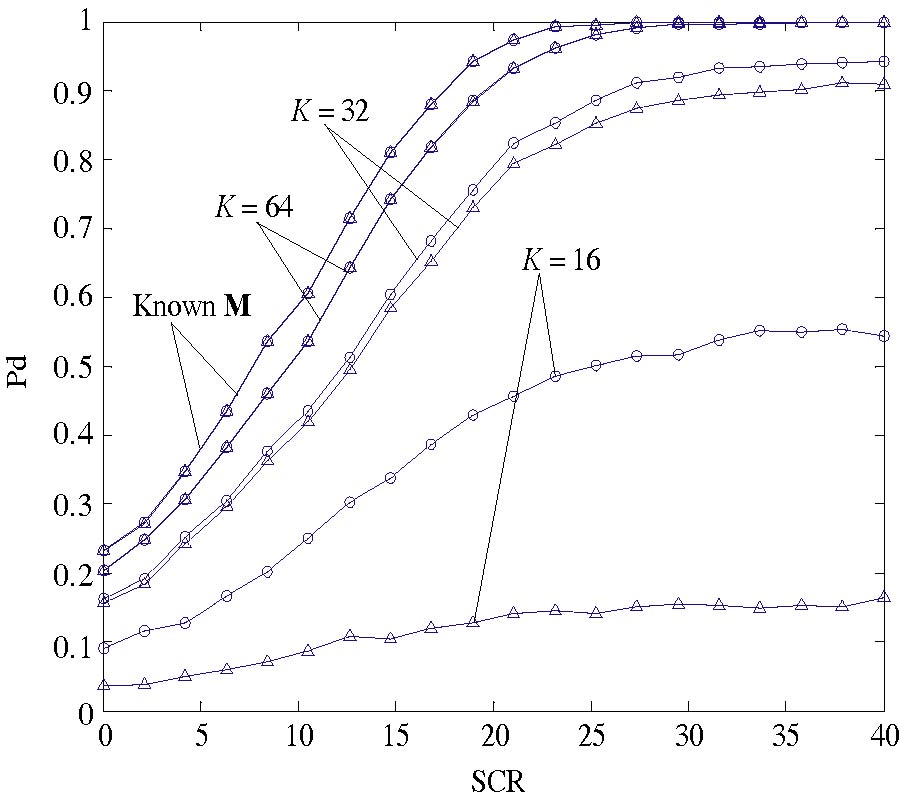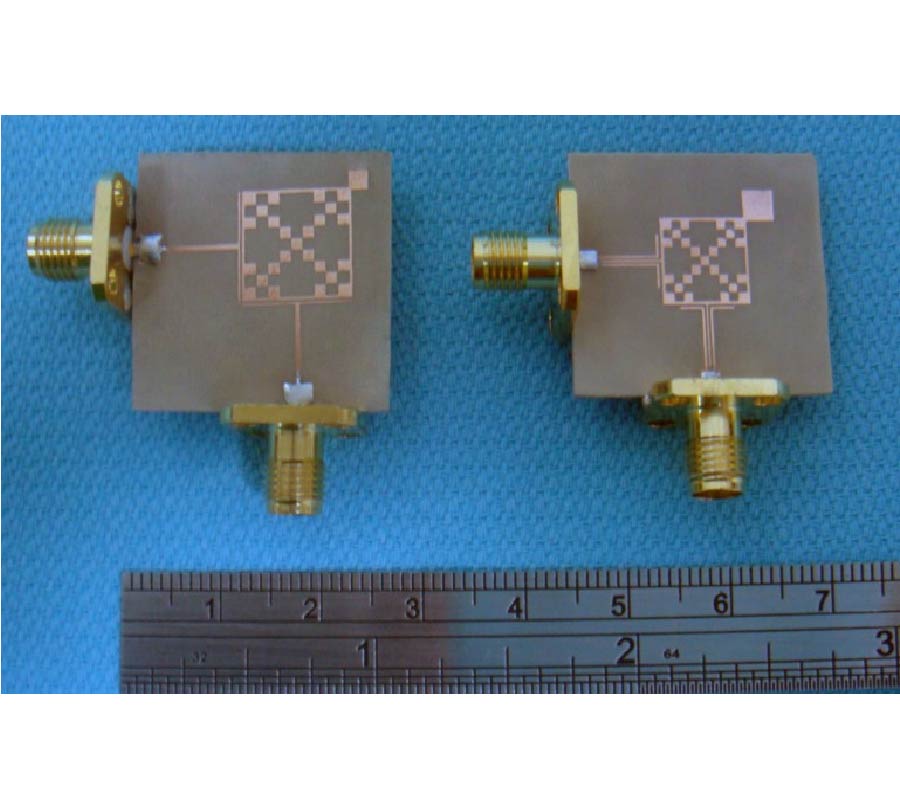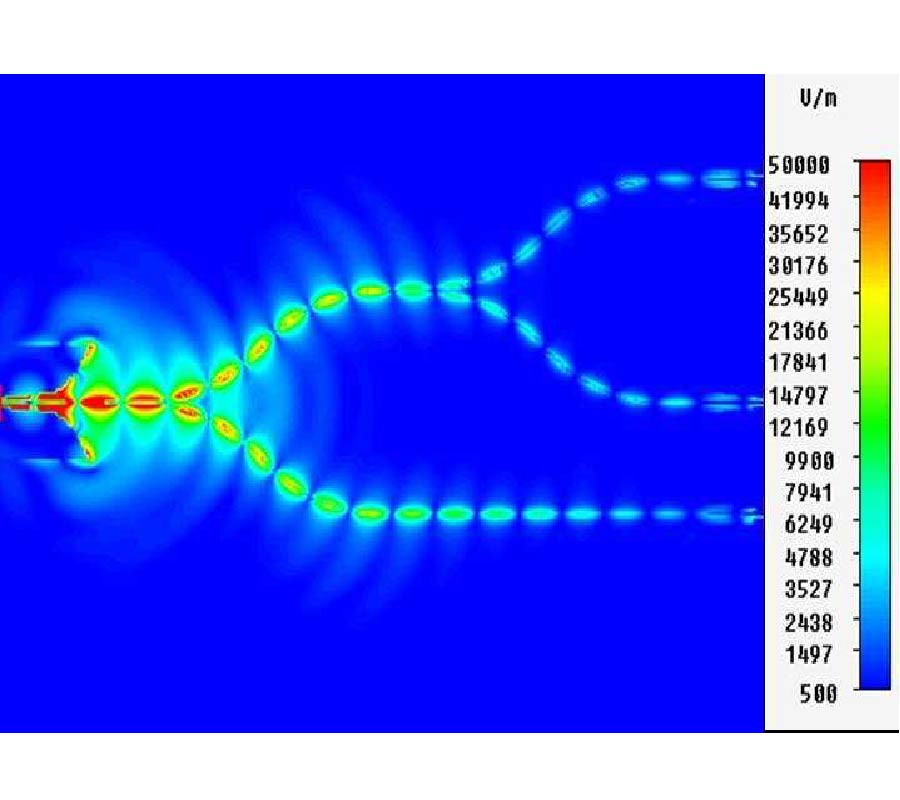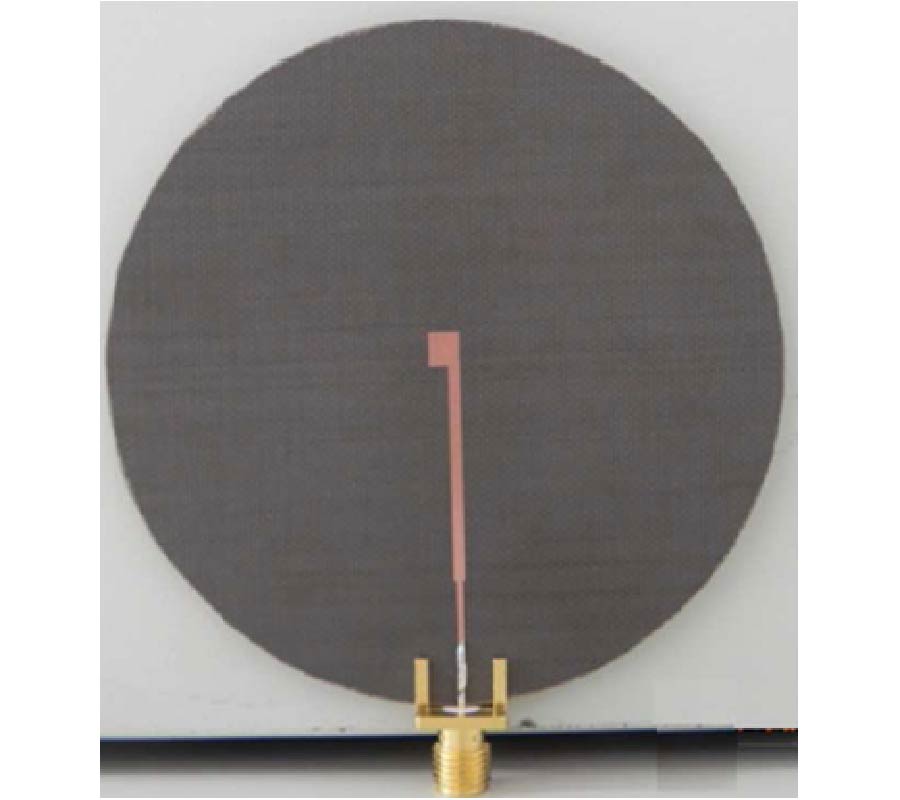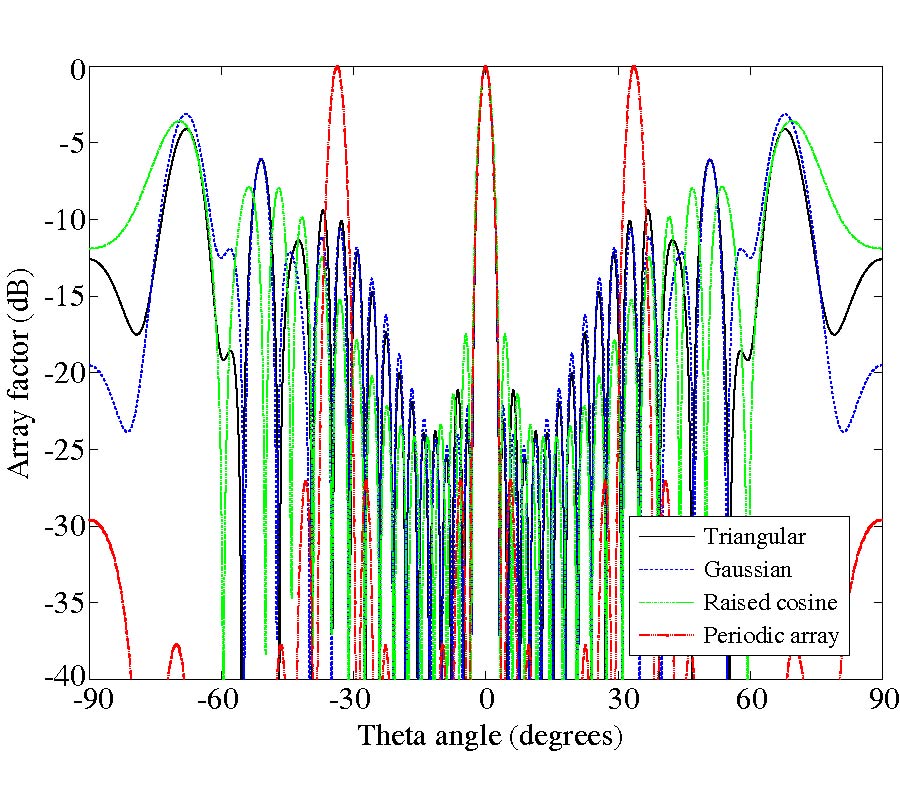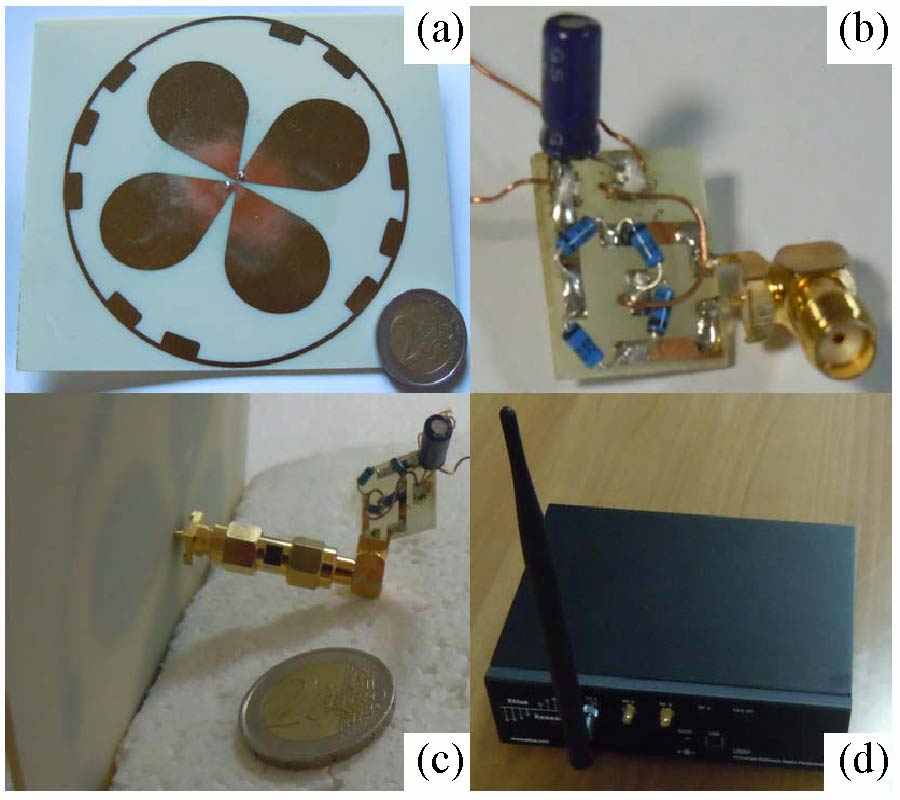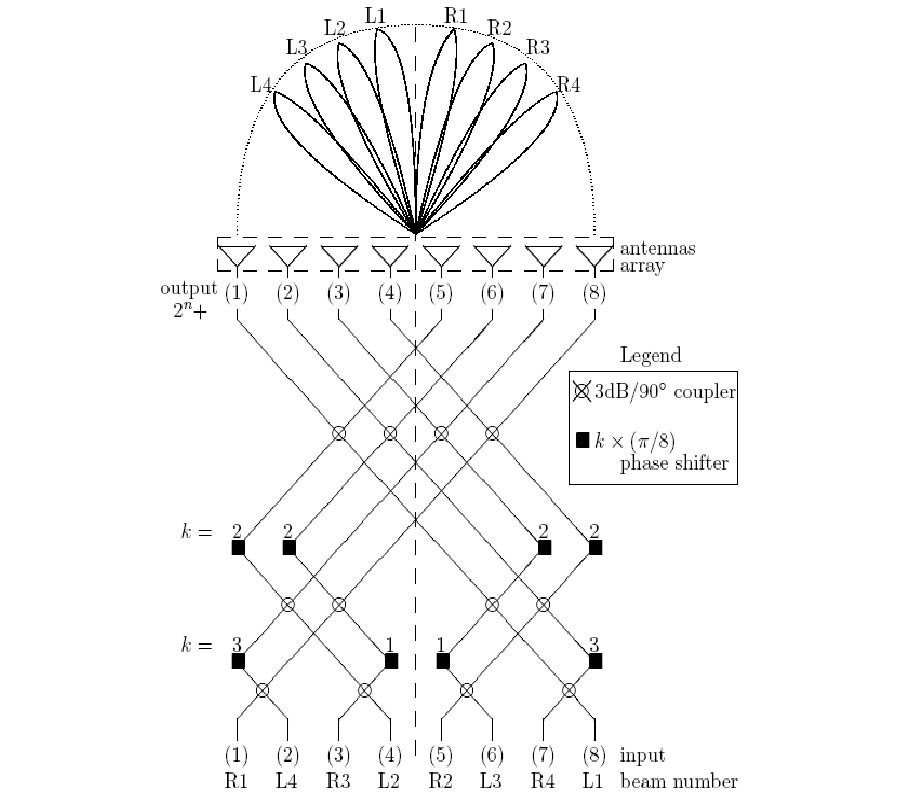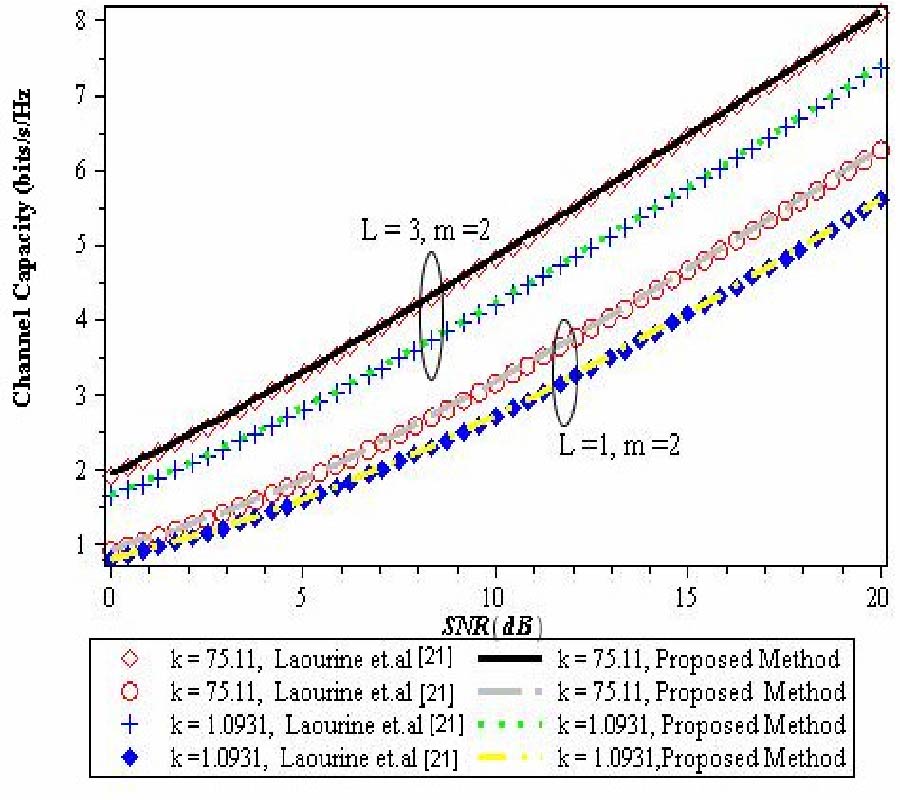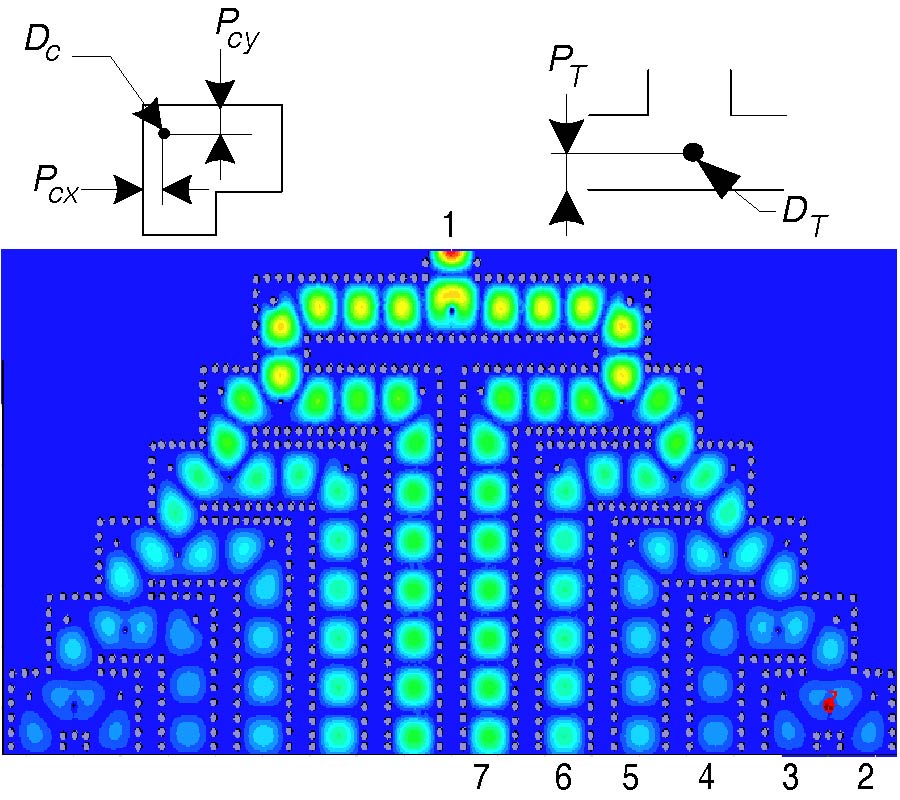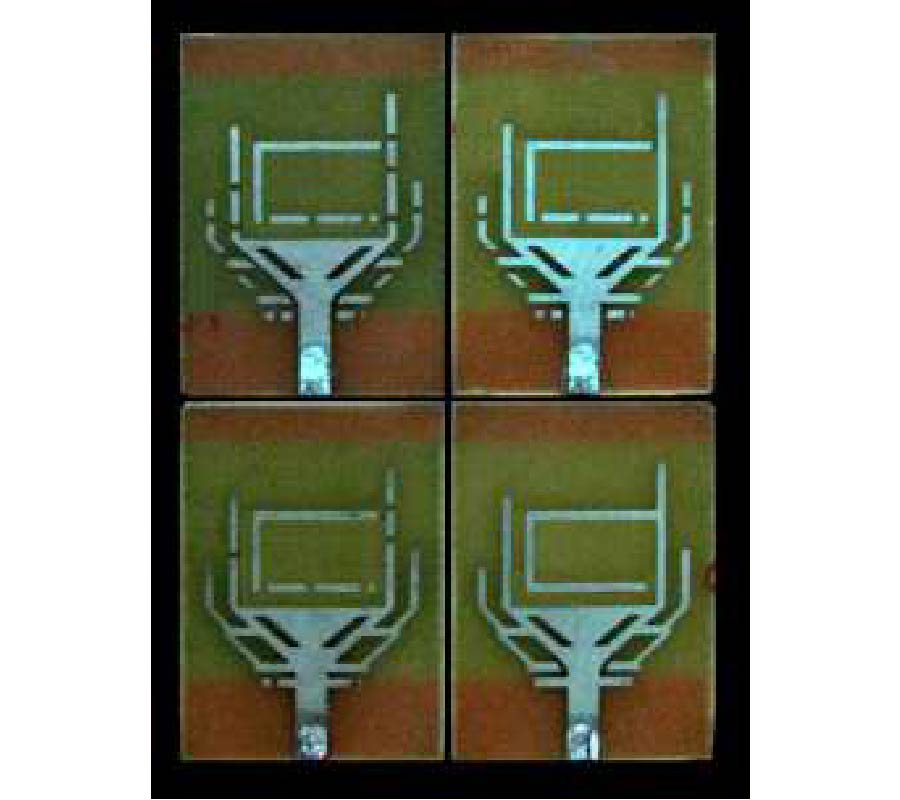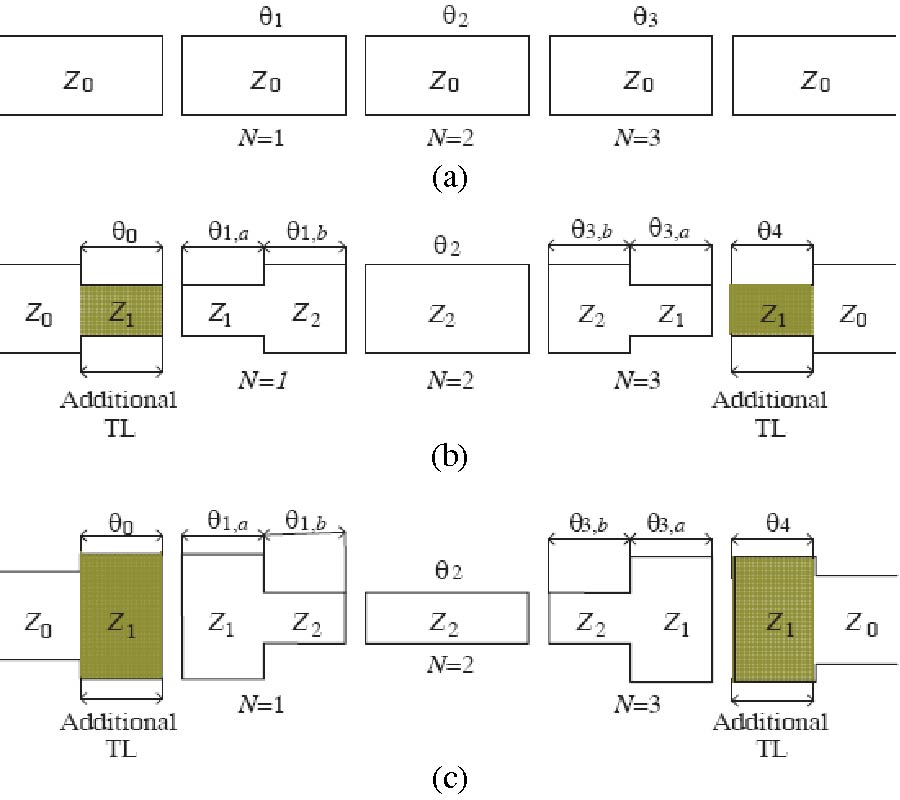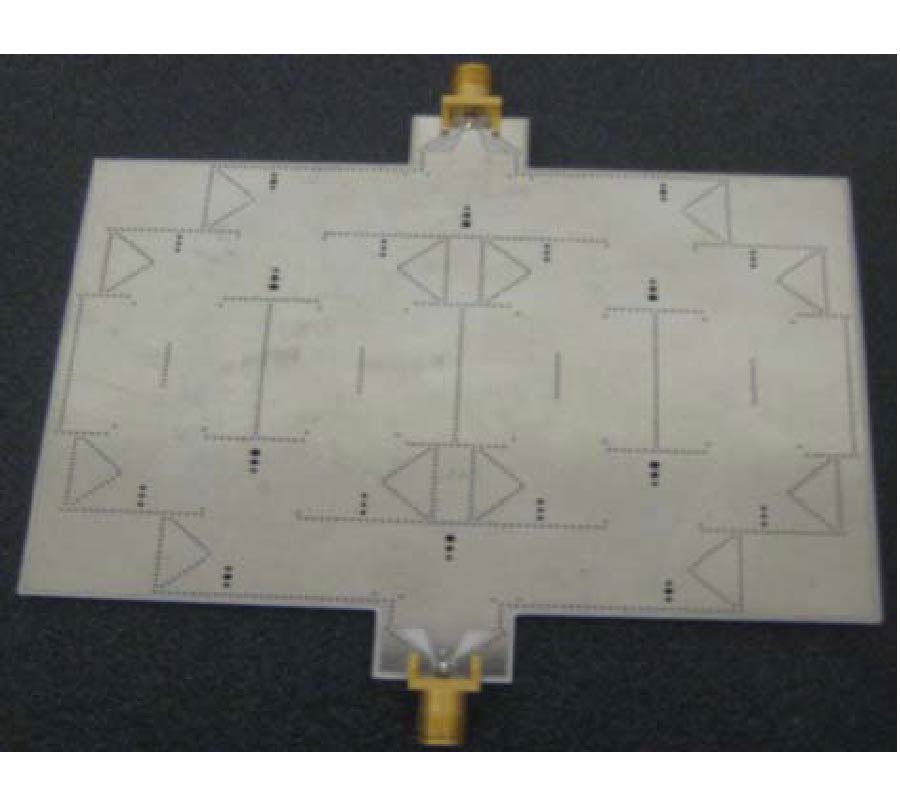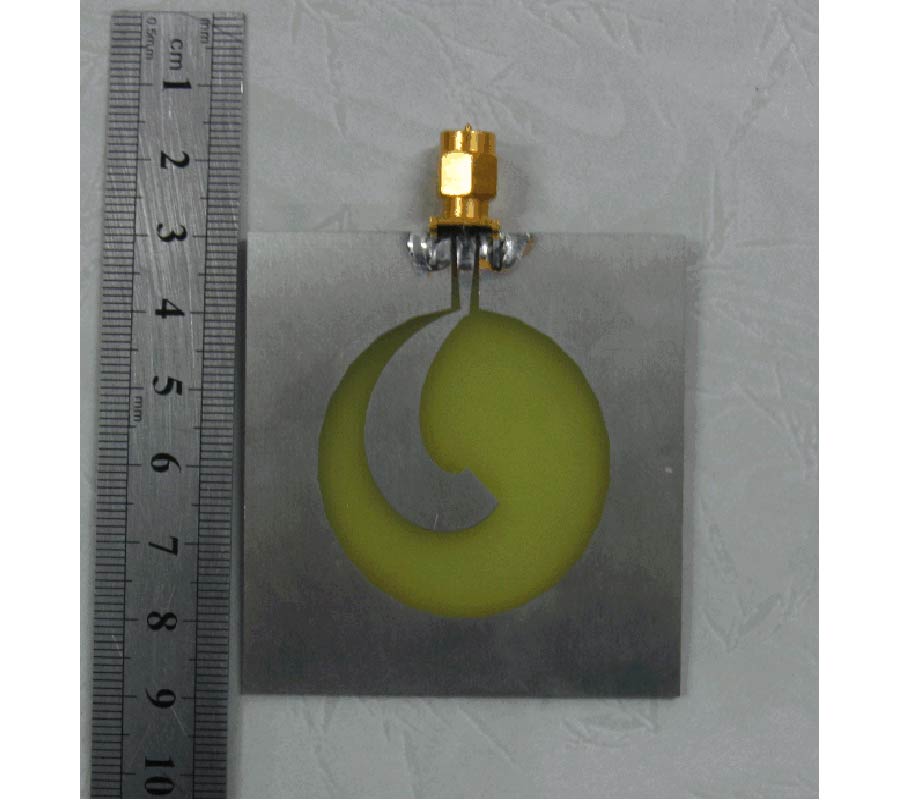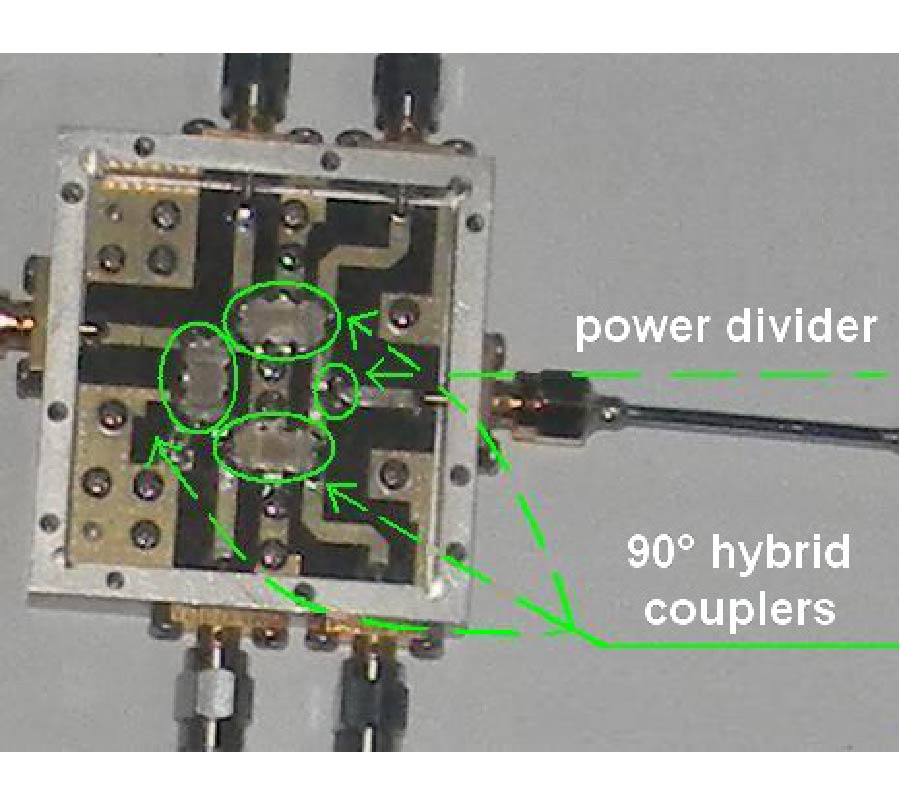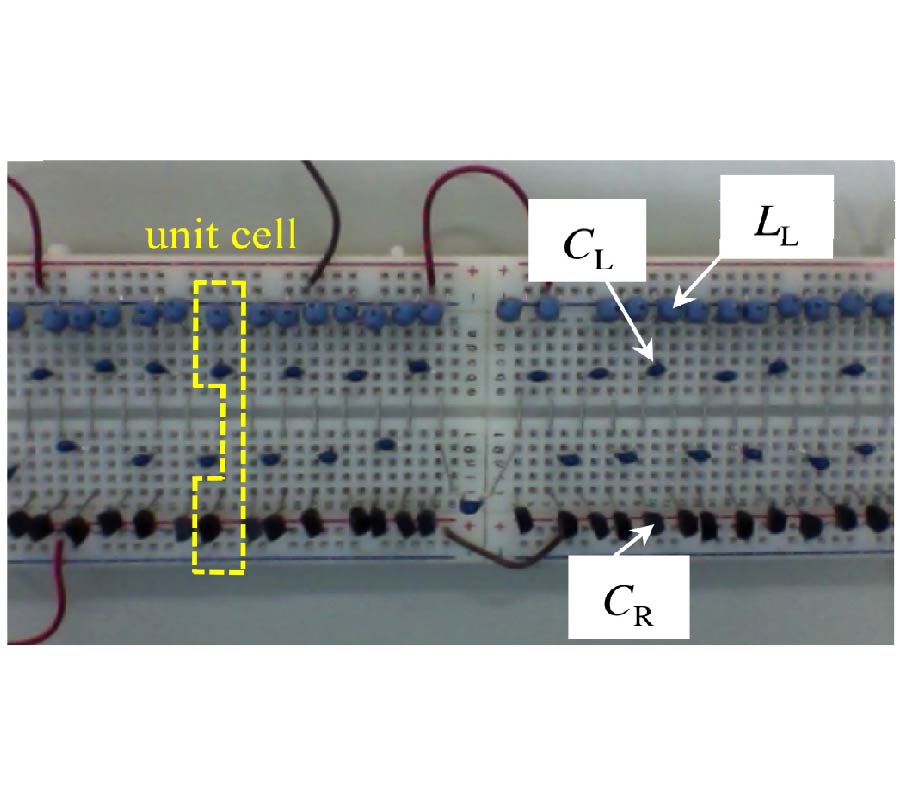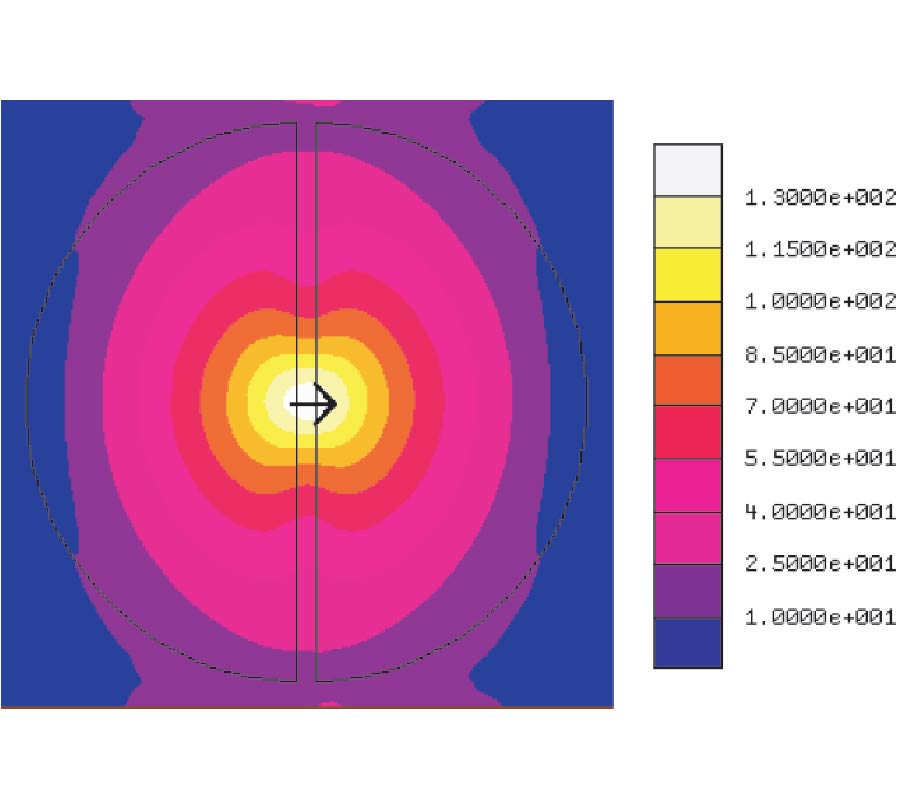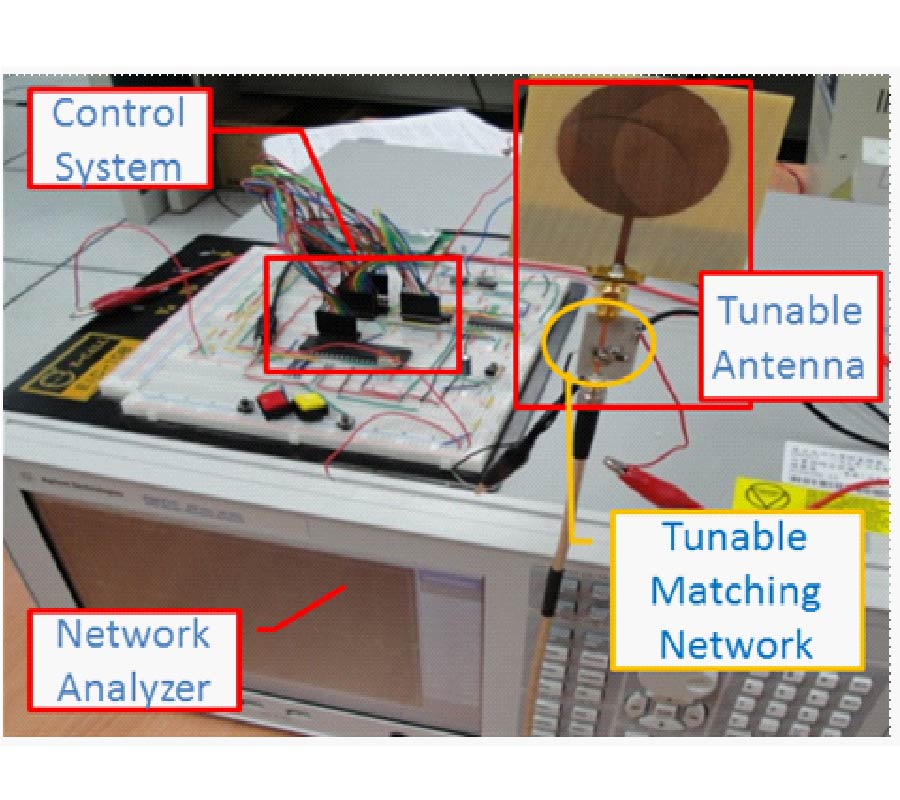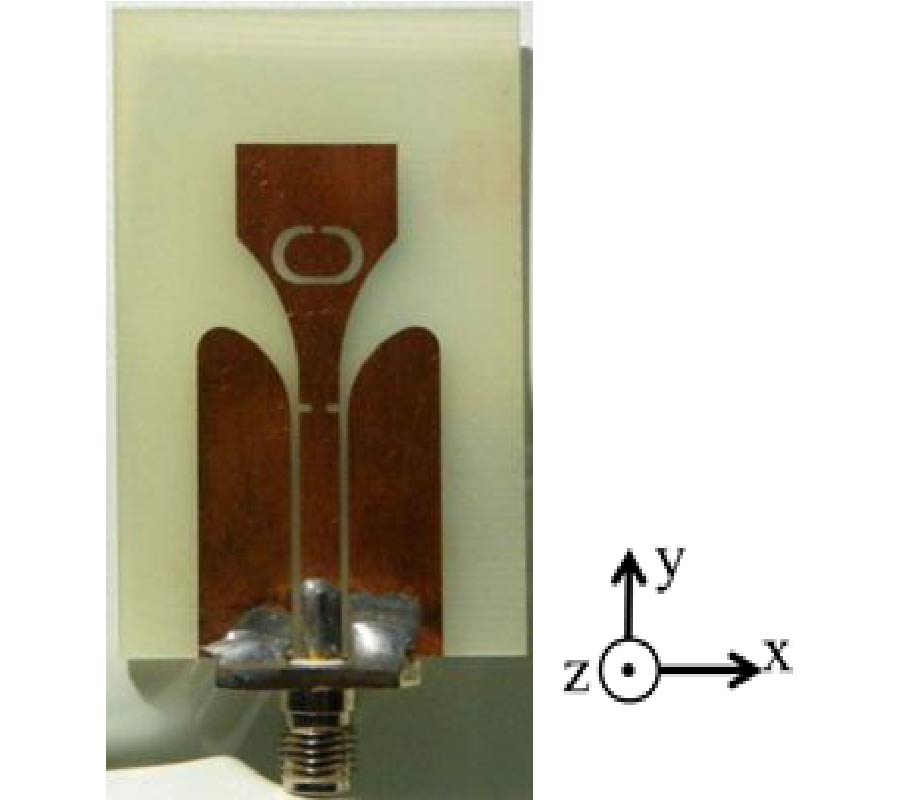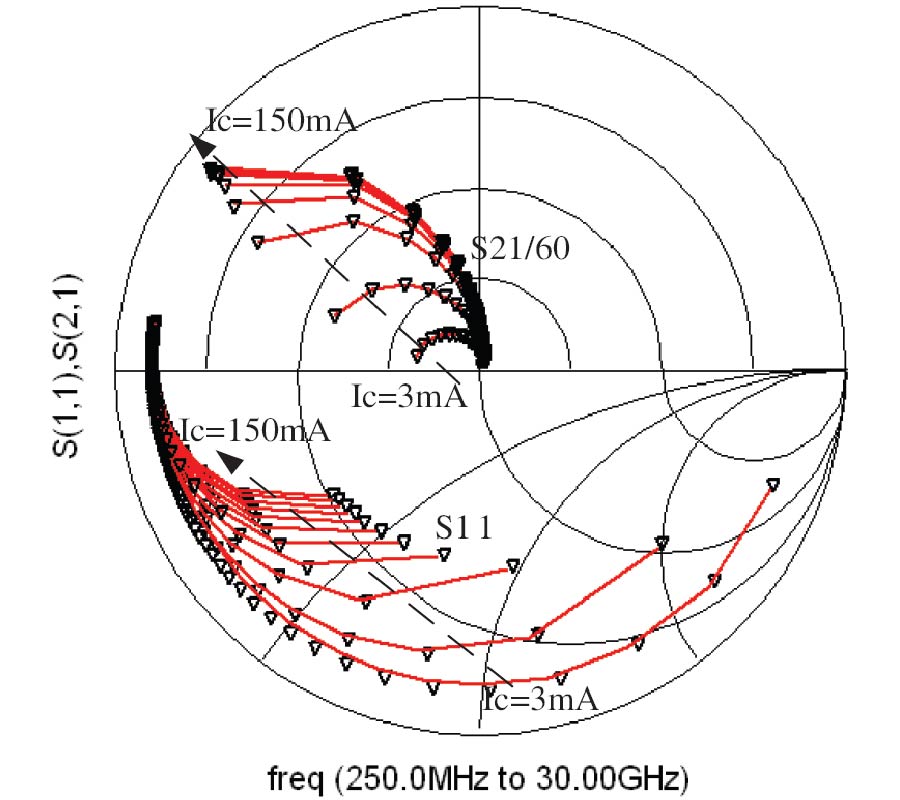Miniaturized Dual-Mode Resonators with Minkowski-Island-Based Fractal Patch for WLAN Dual-Band Systems
Ji-Chyun Liu,
Hsin-Hsiang Liu,
Kuan-Dih Yeh,
Chin-Yen Liu,
Bing-Hao Zeng and
Chih-Chiang Chen
The miniaturized dual-mode dual-band band-pass filters (BPF) using Minkowski-island-based (MIB) fractal patch resonators are proposed in this paper. The BPF is mainly formed by a square patch resonator in which a MIB fractal configuration with 2nd order iteration is embedded in the patch. By perturbation and inter-digital coupling, the wide-band and dual-band responses are obtained respectively. For miniaturized wide-band design, at 2.41 GHz central frequency it has good measured characteristics including the wide bandwidth of 2.26-2.56 GHz (3-dB fractional bandwidth of 12.4%), low insertion loss of 0.72 dB, high rejection level (-52.5/-44.9 dB), and a patch size reduction with 60.6%. For compact dual-band design, the proposed filter covers the required bandwidths for WLAN bands (2.20-2.96 GHz and 4.74-5.85 GHz). The patch size reduction of 78.1% is obtained. Two transmission zeros are placed between the two pass-bands and resulted in good isolation.
